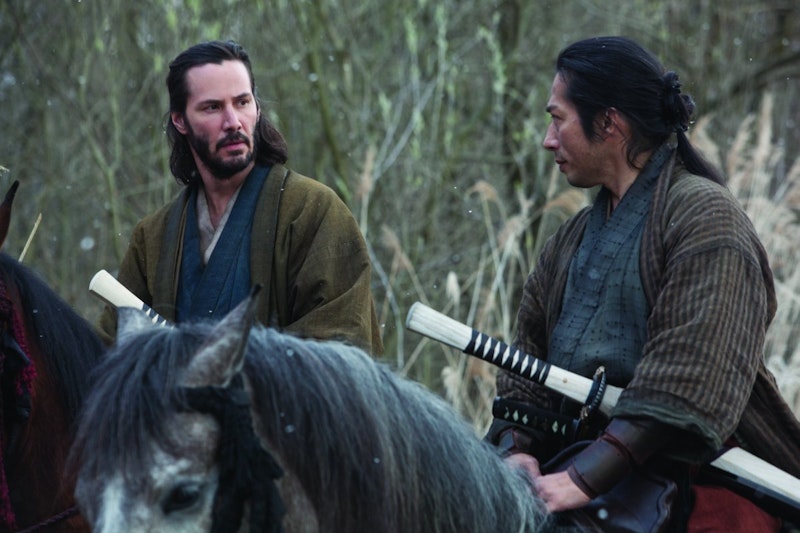It's said that “to know the tale of the forty-seven ronin is to know Japan.” It's something to chew on, whether you believe it or not. Keanu Reeves certainly did. The actor stars in the newest adaptation of Japan's most enduring folk legend, subject of at least four films in the 20th century. But this version has a few key differences that separate it from its predecessors, and from the original legend especially. Here's a breakdown (with spoilers) of the major artistic liberties, so you can differentiate each version and contemplate their meaning.
- In the original legend, a group of samurai serving their master Asano became ronin (masterless) after Asano attacked Kira, a court official who was visiting to teach Asano proper court etiquette, for being insulting and arrogant. Asano was immediately ordered to commit seppuku (ritual suicide).
- In 47 Ronin, the story really begins when Kai—Keanu Reeves as a mysterious forest child with the power to turn into demon smoke and kill people slightly faster than the average human—stumbles out of his mysterious forest and becomes the only white dude in Japan. This is apparently much more important than the actual plot. He eventually has a plotline about being ashamed of his demon-murder training, but it's nothing you haven't seen before in an X-Men movie.
- The events which have since passed into legend occurred in Edo-period Japan, around the years 1701-1703.
- 47 Ronin takes place in “ancient feudal Japan,” which is an oxymoron but vaguely explains why there are so many ogres, demons, and bull-things that look like rejects from a Studio Ghibli film.
- Real-life Asano was provoked into violence by attacks on his character, upbringing, and family, calling into question what was more dishonorable: the insults, or Asano's attack on a direct superior. It's an interesting question to consider, especially given the dual emphasis on propriety and hierarchy throughout Japan's history.
- In 47 Ronin, Asano is doped in the middle of the night with magic purple spider piss that makes him think his daughter is being raped so that he—an old man who should probably just call his elite squad of samurai instead of getting involved—tries to stab Kira, the “rapist” who orchestrated the whole weirdly elaborate hallucination sequence.
- According to the stories, Kira was a callous, rude government official who was eventually proven to be a craven weakling. He has come to represent ignorance and dishonorable conduct, though ostensibly it was Asano who had acted dishonorably.
- Movie-Kira is working with a shapeshifting witch who is going to help him, uh, rule the world? Kill the shogun? Something? Maybe he's just going to kill everyone in sight and then retire. I couldn't tell.
- The legendary ronin waited two years for the right time to strike at Kira, and did so with devastating precision and incomparable valor.
- 47 Ronin's less pasty leading man Oishi (Hiroyuki Sanada, lately of The Wolverine) is thrown into a pit for a year, which he emerges from with no recognizable physical or psychological trauma. He gets the gang back together, but they need swords for some reason (maybe they sold theirs?). Kai leads them to his ol' buddies the forest demons to get some blades, but they have to pass tests first (natch). Kai has to grab a magic sword before his old master does, while Oishi has to stand still and not participate in the totally rad action acrobatics taking place around him. Thus armed, the ronin sneak into the castle and lose exactly zero men in the process.
- Everyone commits seppuku at the end of the legend.
- Actually, that's still the case. Goddamn, what a downer.
—Follow Sam Riedel on Twitter: @SamusMcQueen

